The adventure tourism industry is a dynamic sector that combines travel with exhilarating activities in unique destinations. SIXT.VN offers curated experiences to make your adventure travel dreams a reality, ensuring unforgettable journeys in Vietnam. From trekking through lush jungles to exploring vibrant cities, SIXT.VN provides seamless services for adventure travelers. Explore the realms of sustainable tourism, ecotourism, and cultural immersion for an enriching travel journey.
1. What Is the Adventure Tourism Industry and How Does It Function?
The adventure tourism industry involves travel experiences that include physical activity, cultural exchange, or activities in nature. This industry functions through a network of tour operators, guides, accommodations, and transportation services. Adventure tourism focuses on providing unique, challenging, and immersive travel experiences. It blends ecotourism and sustainable practices to minimize environmental impact. According to the Adventure Travel Trade Association (ATTA), adventure tourism also promotes cultural awareness and benefits local communities by ensuring responsible and sustainable growth.
1.1 Key Components of the Adventure Tourism Industry
The adventure tourism industry is a complex ecosystem comprising various interconnected elements. These components work together to deliver unique, challenging, and immersive travel experiences that appeal to a wide range of adventure enthusiasts.
| Component | Description | Example |
|---|---|---|
| Tour Operators | Plan, organize, and execute adventure trips, managing logistics and ensuring safety. | SIXT.VN curates adventure tours in Vietnam, providing comprehensive travel solutions including transportation and accommodations. |
| Guides | Lead and instruct participants in various activities, offering expertise and ensuring safety. | Experienced local guides lead trekking expeditions in Sapa, offering insights into local culture and ensuring the safety of the trekkers. |
| Accommodation | Provides lodging options ranging from eco-lodges to hotels, catering to different budgets and preferences. | Eco-friendly resorts in Ha Long Bay offer sustainable accommodation options for tourists seeking adventure and relaxation. |
| Transportation | Handles the movement of travelers and equipment to and from activity locations. | SIXT.VN offers airport transfer services and car rentals, ensuring convenient transportation for travelers exploring Hanoi and beyond. |
| Activity Providers | Offer specific adventure activities such as trekking, rock climbing, diving, and wildlife safaris. | Local diving centers in Nha Trang provide guided scuba diving tours, allowing tourists to explore the vibrant marine life. |
| Equipment Suppliers | Supply necessary gear and equipment for adventure activities, ensuring participants have the right tools for their adventures. | Rental shops in Hanoi offer bicycles and motorbikes for tourists looking to explore the city and surrounding areas at their own pace. |
| Tourism Boards | Promote adventure tourism destinations and ensure sustainable tourism practices. | Vietnam National Administration of Tourism (VNAT) promotes Vietnam as a premier adventure tourism destination through various marketing campaigns and sustainable initiatives. |
| Insurance Providers | Offer travel insurance policies that cover adventure activities, providing peace of mind to travelers. | Travel insurance companies offer policies covering adventure activities like trekking, diving, and motorcycling, ensuring travelers are protected against unforeseen events. |
1.2 How Adventure Tourism Differs from Traditional Tourism
Adventure tourism stands apart from traditional tourism by offering experiences that prioritize physical activity, immersion in nature, and cultural interaction. Traditional tourism often focuses on relaxation, sightseeing, and well-trodden paths.
| Feature | Adventure Tourism | Traditional Tourism |
|---|---|---|
| Focus | Active participation, physical challenges, nature immersion. | Relaxation, sightseeing, comfort. |
| Activities | Trekking, climbing, diving, rafting, wildlife safaris. | Visiting landmarks, museums, shopping, dining. |
| Travel Style | Off-the-beaten-path, eco-friendly, sustainable. | Mainstream destinations, resorts, cruises. |
| Target Audience | Active travelers, thrill-seekers, nature enthusiasts, culturally curious individuals. | Leisure travelers, families, seniors, those seeking relaxation and convenience. |
| Economic Impact | Supports local communities, promotes conservation, encourages small businesses. | Can lead to over-tourism, environmental degradation, leakage of profits. |
1.3 The Role of Technology in Adventure Tourism
Technology plays a crucial role in modern adventure tourism, enhancing the planning, execution, and overall experience of adventure trips. It improves safety, provides real-time information, and connects travelers with local communities.
- Online Booking Platforms: Enable travelers to easily find and book adventure tours, accommodations, and transportation services.
- GPS and Navigation Apps: Offer real-time location tracking, route planning, and safety features for trekking and other outdoor activities.
- Weather Forecasting Tools: Provide accurate weather information, helping travelers plan their activities safely.
- Communication Devices: Allow travelers to stay connected with guides, tour operators, and emergency services in remote areas.
- Social Media and Travel Blogs: Offer inspiration, reviews, and travel tips from other adventure enthusiasts.
- Wearable Technology: Fitness trackers and smartwatches monitor health and performance during physical activities.
- Virtual Reality (VR): Allows potential travelers to experience destinations and activities before booking.
2. What Are the Key Market Segments in Adventure Tourism?
The adventure tourism market is diverse, comprising several key segments, each with unique preferences, motivations, and travel styles. Understanding these segments helps tour operators and destinations tailor their offerings to meet specific needs.
2.1 Hard Adventure Tourists
Hard adventure tourists seek high-intensity activities that involve significant physical exertion and risk. They are experienced adventurers who thrive on challenges and pushing their limits.
- Activities: Mountaineering, rock climbing, extreme skiing, whitewater kayaking, caving, and remote wilderness expeditions.
- Motivations: Thrill-seeking, testing physical and mental endurance, achieving personal goals, and experiencing extreme environments.
- Demographics: Typically younger adults (25-45 years old) with high fitness levels and previous adventure experience.
- Example: Climbing Mount Fansipan, the highest peak in Indochina, or exploring the Son Doong Cave in Vietnam.
2.2 Soft Adventure Tourists
Soft adventure tourists prefer less intense activities that still offer a sense of adventure but are accessible to a wider range of fitness levels. These activities often involve nature immersion and cultural experiences.
- Activities: Trekking, hiking, cycling, kayaking, snorkeling, wildlife watching, and cultural tours.
- Motivations: Enjoying nature, learning about local culture, staying active, and experiencing new things in a safe and comfortable environment.
- Demographics: A broad age range (30-55 years old) including families, couples, and solo travelers with moderate fitness levels.
- Example: Trekking in Sapa to visit ethnic minority villages or kayaking in Ha Long Bay to explore the stunning limestone karsts.
2.3 Ecotourists
Ecotourists are environmentally conscious travelers who seek to minimize their impact on the environment and support local conservation efforts. They are interested in learning about the natural world and contributing to sustainable tourism practices.
- Activities: Bird watching, nature photography, wildlife safaris, eco-lodges, and volunteering in conservation projects.
- Motivations: Protecting the environment, supporting local communities, learning about biodiversity, and experiencing nature responsibly.
- Demographics: Environmentally aware individuals and families with a strong interest in conservation and sustainable living.
- Example: Visiting Cuc Phuong National Park to observe endangered primates or staying in an eco-lodge in the Mekong Delta to support local communities.
2.4 Cultural Tourists
Cultural tourists are interested in experiencing the local culture, traditions, and history of a destination. They seek authentic interactions with local people and want to learn about their way of life.
- Activities: Visiting historical sites, attending festivals, participating in traditional ceremonies, taking cooking classes, and staying in homestays.
- Motivations: Immersing themselves in local culture, learning about history, meeting local people, and experiencing different ways of life.
- Demographics: A wide age range including individuals, couples, and families interested in cultural enrichment and authentic experiences.
- Example: Exploring the ancient town of Hoi An, attending a water puppet show in Hanoi, or visiting the ethnic minority markets in the northern highlands of Vietnam.
2.5 Volunteer Tourists (Voluntourists)
Volunteer tourists combine travel with volunteering in community development or conservation projects. They seek to make a positive impact on the places they visit and contribute to meaningful causes.
- Activities: Teaching English, building houses, working on farms, participating in conservation projects, and providing medical assistance.
- Motivations: Making a difference, helping others, learning new skills, and experiencing a destination in a more meaningful way.
- Demographics: Individuals and groups of all ages interested in giving back to the community and supporting sustainable development.
- Example: Volunteering at a local school in a rural village in Vietnam or participating in a reforestation project in a national park.
3. What Are the Key Activities and Attractions in Adventure Tourism?
Adventure tourism offers a wide range of activities and attractions catering to different interests and fitness levels. These activities often involve physical exertion, nature immersion, and cultural experiences.
3.1 Trekking and Hiking
Trekking and hiking are popular adventure activities that involve exploring natural environments on foot. They range from short, easy walks to multi-day expeditions in remote wilderness areas.
- Destinations: Sapa, Ha Giang, Cat Ba National Park, Cuc Phuong National Park.
- Attractions: Stunning landscapes, diverse ecosystems, ethnic minority villages, and challenging trails.
- Considerations: Fitness level, weather conditions, permits, and local guides.
3.2 Rock Climbing and Mountaineering
Rock climbing and mountaineering involve ascending rock formations or mountains using specialized equipment and techniques. They require a high level of fitness, skill, and experience.
- Destinations: Ha Long Bay, Cat Ba Island, Mai Chau.
- Attractions: Limestone cliffs, scenic views, and challenging climbs.
- Considerations: Safety equipment, experienced guides, weather conditions, and climbing permits.
3.3 Water Sports
Water sports include a variety of activities such as kayaking, rafting, canyoning, scuba diving, and snorkeling. They offer opportunities to explore marine environments and enjoy thrilling adventures.
- Destinations: Ha Long Bay, Nha Trang, Phu Quoc, Mekong Delta.
- Attractions: Limestone karsts, coral reefs, diverse marine life, and scenic waterways.
- Considerations: Water conditions, safety equipment, experienced guides, and diving certifications.
3.4 Wildlife Safaris and Bird Watching
Wildlife safaris and bird watching involve observing animals in their natural habitats. They offer opportunities to learn about biodiversity and support conservation efforts.
- Destinations: Cat Tien National Park, Cuc Phuong National Park, Yok Don National Park.
- Attractions: Diverse wildlife, rare bird species, and natural ecosystems.
- Considerations: Ethical wildlife tourism practices, experienced guides, and appropriate clothing and equipment.
3.5 Cycling and Motorcycling
Cycling and motorcycling are popular ways to explore a destination at your own pace. They offer opportunities to experience the local culture and scenery while staying active.
- Destinations: Mekong Delta, Sapa, Ha Giang, Hoi An.
- Attractions: Scenic routes, cultural villages, and local markets.
- Considerations: Road conditions, traffic safety, appropriate gear, and local regulations.
4. How Does Adventure Tourism Benefit Local Economies and Communities?
Adventure tourism can significantly benefit local economies and communities by creating jobs, supporting small businesses, and promoting sustainable development.
4.1 Job Creation
Adventure tourism creates a variety of job opportunities in areas such as tour guiding, accommodation, transportation, and hospitality. These jobs provide income and improve the standard of living for local residents.
- Tour Guides: Local guides lead adventure tours, sharing their knowledge of the area and ensuring the safety of participants.
- Accommodation Staff: Hotels, eco-lodges, and homestays employ local staff to provide accommodation and hospitality services.
- Transportation Providers: Drivers, boat operators, and other transportation providers facilitate the movement of travelers and equipment.
- Hospitality Workers: Restaurants, cafes, and other hospitality businesses employ local staff to provide food and beverage services.
4.2 Support for Small Businesses
Adventure tourism supports small businesses such as local restaurants, craft shops, and equipment rental services. These businesses provide goods and services to tourists and contribute to the local economy.
- Local Restaurants: Offer traditional cuisine and support local farmers and suppliers.
- Craft Shops: Sell locally made handicrafts and souvenirs, preserving cultural traditions and providing income for artisans.
- Equipment Rental Services: Provide equipment for adventure activities such as bicycles, kayaks, and camping gear.
4.3 Infrastructure Development
Adventure tourism can lead to infrastructure development in remote areas, such as improved roads, trails, and communication networks. This infrastructure benefits both tourists and local communities.
- Road Improvements: Better roads facilitate access to remote areas, making them more accessible to tourists and improving transportation for local residents.
- Trail Development: Well-maintained trails enhance the trekking and hiking experience and protect the environment.
- Communication Networks: Improved communication networks provide access to information and emergency services.
4.4 Conservation Efforts
Adventure tourism can promote conservation efforts by raising awareness of environmental issues and generating revenue for conservation projects.
- Entrance Fees: Entrance fees to national parks and protected areas can be used to fund conservation projects and support park management.
- Eco-Lodges: Eco-lodges can implement sustainable practices and support local conservation initiatives.
- Community-Based Tourism: Community-based tourism projects can generate income for local communities and incentivize them to protect natural resources.
4.5 Cultural Preservation
Adventure tourism can help preserve local culture and traditions by promoting cultural tourism and supporting cultural events.
- Cultural Tours: Cultural tours can provide opportunities for tourists to learn about local culture and traditions.
- Cultural Events: Supporting cultural events such as festivals and ceremonies can help preserve cultural heritage and promote cultural exchange.
- Homestays: Staying in homestays can provide tourists with an immersive cultural experience and generate income for local families.
5. What Are the Potential Negative Impacts of Adventure Tourism?
While adventure tourism can bring many benefits, it also has the potential for negative impacts on the environment, local communities, and cultural heritage.
5.1 Environmental Degradation
Adventure tourism activities can contribute to environmental degradation through pollution, habitat destruction, and resource depletion.
- Pollution: Littering, water pollution, and air pollution from transportation can damage ecosystems and harm wildlife.
- Habitat Destruction: Construction of infrastructure such as hotels and roads can destroy natural habitats and displace wildlife.
- Resource Depletion: Overuse of water, energy, and other resources can deplete natural resources and strain local ecosystems.
5.2 Social and Cultural Impacts
Adventure tourism can have negative social and cultural impacts on local communities, such as cultural commodification, loss of traditional values, and social disruption.
- Cultural Commodification: Turning local culture into a commodity for tourist consumption can lead to the loss of authenticity and cultural degradation.
- Loss of Traditional Values: Exposure to foreign cultures and values can erode traditional values and customs.
- Social Disruption: Increased tourism can lead to social disruption such as crime, prostitution, and drug abuse.
5.3 Economic Leakage
Economic leakage occurs when tourism revenue flows out of the local economy to foreign-owned companies or suppliers. This reduces the economic benefits for local communities.
- Foreign-Owned Companies: If tourism businesses are owned by foreign companies, profits may be repatriated to their home countries rather than reinvested in the local economy.
- Imported Goods: If tourism businesses rely on imported goods and services, this reduces the demand for local products and services.
5.4 Over-Tourism
Over-tourism occurs when a destination is overwhelmed by too many tourists, leading to overcrowding, congestion, and strain on local resources and infrastructure.
- Crowding: Overcrowding can detract from the tourist experience and put pressure on local resources and infrastructure.
- Congestion: Traffic congestion and long queues can make it difficult for tourists and locals to move around.
- Strain on Resources: Over-tourism can strain local resources such as water, energy, and waste management systems.
5.5 Safety and Security Risks
Adventure tourism activities can pose safety and security risks for participants, such as accidents, injuries, and exposure to natural hazards.
- Accidents and Injuries: Adventure activities such as trekking, climbing, and water sports can lead to accidents and injuries.
- Natural Hazards: Exposure to natural hazards such as earthquakes, floods, and landslides can pose risks to tourists.
- Crime: Tourists can be targets for crime, especially in crowded areas and tourist hotspots.
6. What Are the Key Trends Shaping the Future of Adventure Tourism?
Several key trends are shaping the future of adventure tourism, including sustainable tourism, technology integration, personalized experiences, and health and wellness tourism.
6.1 Sustainable Tourism
Sustainable tourism is becoming increasingly important as travelers become more aware of the environmental and social impacts of their travel choices. This involves minimizing negative impacts, supporting local communities, and promoting conservation efforts.
- Eco-Friendly Accommodation: Eco-lodges and sustainable hotels are becoming more popular, offering environmentally friendly accommodation options.
- Responsible Tour Operators: Tour operators are adopting responsible tourism practices such as reducing waste, conserving resources, and supporting local communities.
- Carbon Offsetting: Travelers are increasingly choosing to offset their carbon emissions by investing in carbon reduction projects.
6.2 Technology Integration
Technology is playing a greater role in adventure tourism, enhancing the planning, execution, and overall experience of adventure trips.
- Mobile Apps: Mobile apps provide access to information, maps, weather forecasts, and booking services.
- Wearable Devices: Wearable devices such as fitness trackers and smartwatches monitor health and performance during adventure activities.
- Virtual Reality: Virtual reality technology allows travelers to experience destinations and activities before booking.
6.3 Personalized Experiences
Travelers are increasingly seeking personalized and customized adventure experiences that cater to their individual interests and preferences.
- Custom Tours: Tour operators are offering custom tours that can be tailored to meet the specific needs and interests of individual travelers or groups.
- Niche Activities: Niche adventure activities such as wildlife photography, culinary tours, and wellness retreats are becoming more popular.
- Experiential Travel: Travelers are seeking immersive experiences that allow them to connect with local culture and nature.
6.4 Health and Wellness Tourism
Health and wellness tourism is a growing trend that combines adventure activities with health and wellness practices such as yoga, meditation, and spa treatments.
- Wellness Retreats: Wellness retreats offer a combination of adventure activities and wellness practices in natural settings.
- Yoga and Meditation: Yoga and meditation retreats are becoming more popular, offering opportunities to practice mindfulness and connect with nature.
- Spa Treatments: Spa treatments such as massage, aromatherapy, and hydrotherapy are being integrated into adventure travel experiences.
6.5 Adventure Tourism and the Silver Economy
The “silver economy,” encompassing travelers aged 50 and over, represents a significant and growing market segment within adventure tourism. This demographic often possesses the time, resources, and desire for unique and enriching travel experiences.
- Tailored Activities: Tour operators are developing activities suited for older adults, focusing on low-impact adventures with cultural and historical immersion.
- Accessible Infrastructure: Destinations are improving infrastructure to cater to the needs of older travelers, ensuring ease of movement and comfort.
- Health and Safety: Tour providers are emphasizing health and safety protocols, offering medical support and emergency services tailored to older travelers’ needs.
- Cultural Immersion: Silver economy travelers are particularly interested in cultural experiences, such as historical tours, local cuisine, and interactions with indigenous communities.
- Relaxation and Wellness: Combining adventure with relaxation, such as spa treatments or leisurely nature walks, appeals to older travelers seeking balance and rejuvenation.
7. How Can Adventure Tourism Be Managed Sustainably?
Managing adventure tourism sustainably involves implementing practices that minimize negative impacts and maximize benefits for the environment, local communities, and cultural heritage.
7.1 Environmental Management
Environmental management involves implementing practices that protect natural resources and minimize pollution and waste.
- Waste Reduction: Reducing waste through recycling, composting, and reducing single-use plastics.
- Energy Conservation: Conserving energy through the use of renewable energy sources and energy-efficient technologies.
- Water Conservation: Conserving water through the use of water-efficient technologies and responsible water management practices.
- Pollution Control: Controlling pollution through the use of environmentally friendly transportation and waste management systems.
7.2 Community Engagement
Community engagement involves involving local communities in the planning and management of adventure tourism activities.
- Local Ownership: Supporting local ownership of tourism businesses and ensuring that local communities benefit from tourism revenue.
- Community Participation: Involving local communities in the planning and decision-making processes related to tourism development.
- Cultural Preservation: Protecting local culture and traditions and ensuring that tourism activities respect local customs and values.
7.3 Responsible Tourism Practices
Responsible tourism practices involve adopting ethical and sustainable practices that minimize negative impacts and maximize benefits for the environment and local communities.
- Ethical Wildlife Tourism: Promoting ethical wildlife tourism practices that respect animals and their habitats.
- Fair Labor Practices: Ensuring fair wages and working conditions for tourism workers.
- Respect for Local Culture: Respecting local culture and traditions and avoiding activities that could be offensive or harmful.
7.4 Monitoring and Evaluation
Monitoring and evaluation involve tracking the impacts of adventure tourism and evaluating the effectiveness of sustainable management practices.
- Impact Assessments: Conducting impact assessments to identify the potential environmental, social, and economic impacts of tourism activities.
- Performance Indicators: Developing performance indicators to track progress towards sustainable tourism goals.
- Regular Audits: Conducting regular audits to evaluate the effectiveness of sustainable management practices.
7.5 Education and Awareness
Education and awareness involve educating tourists and local communities about sustainable tourism practices and promoting responsible behavior.
- Tourist Education: Providing tourists with information about sustainable tourism practices and encouraging them to behave responsibly.
- Community Awareness: Raising awareness among local communities about the benefits of sustainable tourism and encouraging them to participate in conservation efforts.
- Training Programs: Providing training programs for tourism workers and local communities on sustainable tourism practices.
8. What Role Does SIXT.VN Play in the Adventure Tourism Industry in Vietnam?
SIXT.VN plays a pivotal role in the adventure tourism industry in Vietnam by providing a range of services that cater to the needs of adventure travelers. We focus on making travel seamless, convenient, and memorable.
8.1 Tailored Adventure Tours
SIXT.VN offers tailored adventure tours that cater to different interests and fitness levels. Our tours are designed to provide unique and immersive experiences that showcase the best of Vietnam’s natural and cultural attractions.
- Trekking Tours: We offer trekking tours in Sapa, Ha Giang, and other mountainous regions, allowing travelers to explore stunning landscapes and visit ethnic minority villages.
- Water Sports Tours: We offer water sports tours in Ha Long Bay, Nha Trang, and Phu Quoc, allowing travelers to enjoy kayaking, snorkeling, and scuba diving.
- Cultural Tours: We offer cultural tours in Hanoi, Hoi An, and other historical cities, allowing travelers to learn about Vietnam’s rich history and culture.
8.2 Airport Transfer Services
SIXT.VN provides reliable and convenient airport transfer services, ensuring that travelers can get to their destination quickly and easily. Our drivers are experienced and knowledgeable about the local area, and our vehicles are well-maintained and comfortable.
- Hanoi Airport Transfers: We offer airport transfer services from Noi Bai International Airport to hotels in Hanoi and other destinations in northern Vietnam.
- Ho Chi Minh City Airport Transfers: We offer airport transfer services from Tan Son Nhat International Airport to hotels in Ho Chi Minh City and other destinations in southern Vietnam.
- Da Nang Airport Transfers: We offer airport transfer services from Da Nang International Airport to hotels in Da Nang and other destinations in central Vietnam.
8.3 Hotel Booking Services
SIXT.VN offers a wide range of hotel options to suit different budgets and preferences. We partner with hotels that meet our standards for quality and sustainability, ensuring that travelers have a comfortable and responsible stay.
- Luxury Hotels: We offer luxury hotels in major cities such as Hanoi, Ho Chi Minh City, and Da Nang, providing travelers with a high level of comfort and service.
- Eco-Lodges: We offer eco-lodges in natural areas such as Sapa, Ha Long Bay, and the Mekong Delta, providing travelers with environmentally friendly accommodation options.
- Budget Hotels: We offer budget hotels in major cities and tourist destinations, providing travelers with affordable accommodation options.
8.4 Car Rental Services
SIXT.VN provides car rental services that allow travelers to explore Vietnam at their own pace. Our vehicles are well-maintained and reliable, and our rental rates are competitive.
- Self-Drive Tours: We offer car rental services for self-drive tours, allowing travelers to explore Vietnam’s scenic routes and cultural attractions at their own pace.
- Chauffeur Services: We offer chauffeur services for travelers who prefer to have a driver, providing a comfortable and convenient way to get around.
- Motorbike Rentals: We offer motorbike rentals for travelers who want to explore Vietnam’s smaller towns and villages.
8.5 Sustainable Tourism Initiatives
SIXT.VN is committed to promoting sustainable tourism practices that minimize negative impacts and maximize benefits for the environment and local communities.
- Supporting Local Businesses: We support local businesses by partnering with local restaurants, craft shops, and tour operators.
- Promoting Conservation: We promote conservation by supporting national parks and protected areas and encouraging travelers to behave responsibly.
- Reducing Waste: We reduce waste by encouraging travelers to recycle, compost, and reduce single-use plastics.
By offering tailored adventure tours, convenient transportation services, comfortable accommodation options, and a commitment to sustainable tourism, SIXT.VN plays a crucial role in the adventure tourism industry in Vietnam.
9. What Are Some Potential Career Paths Within the Adventure Tourism Industry?
The adventure tourism industry offers a wide array of exciting and fulfilling career paths for individuals passionate about travel, adventure, and the outdoors.
9.1 Tour Guide
Tour guides lead adventure tours, providing information, instruction, and support to participants. They must be knowledgeable about the local area, skilled in adventure activities, and able to ensure the safety of their groups.
- Responsibilities: Leading tours, providing instruction, ensuring safety, managing logistics, and providing customer service.
- Skills: Knowledge of the local area, adventure skills, communication skills, leadership skills, and customer service skills.
- Qualifications: First aid certification, wilderness first responder certification, and relevant experience.
9.2 Adventure Travel Consultant
Adventure travel consultants help clients plan and book adventure trips, providing expert advice and recommendations. They must be knowledgeable about different destinations, activities, and travel options.
- Responsibilities: Consulting with clients, researching destinations and activities, creating itineraries, booking travel arrangements, and providing customer service.
- Skills: Knowledge of destinations and activities, sales skills, communication skills, customer service skills, and organizational skills.
- Qualifications: Travel industry experience, sales experience, and relevant certifications.
9.3 Outdoor Educator
Outdoor educators teach outdoor skills and environmental awareness to students of all ages. They work in schools, camps, and outdoor education centers.
- Responsibilities: Developing and delivering outdoor education programs, teaching outdoor skills, leading outdoor activities, and ensuring safety.
- Skills: Knowledge of outdoor skills, teaching skills, communication skills, leadership skills, and safety skills.
- Qualifications: Teaching certification, outdoor education certification, and relevant experience.
9.4 Adventure Photographer/Videographer
Adventure photographers and videographers capture the beauty and excitement of adventure travel, creating stunning images and videos for marketing and promotional purposes.
- Responsibilities: Capturing images and videos, editing content, and promoting content through social media and other channels.
- Skills: Photography skills, videography skills, editing skills, marketing skills, and social media skills.
- Qualifications: Photography or videography degree, relevant experience, and a strong portfolio.
9.5 Park Ranger/Conservationist
Park rangers and conservationists protect natural resources and manage parks and protected areas. They work for government agencies, non-profit organizations, and private companies.
- Responsibilities: Protecting natural resources, managing parks and protected areas, enforcing regulations, educating visitors, and conducting research.
- Skills: Knowledge of natural resources, conservation skills, communication skills, law enforcement skills, and research skills.
- Qualifications: Natural resources degree, conservation degree, and relevant experience.
10. Frequently Asked Questions (FAQ) About Adventure Tourism
10.1 What defines adventure tourism?
Adventure tourism is a type of tourism that involves travel to destinations that offer unique and challenging experiences, often including physical activities and cultural immersion.
10.2 What are the main types of adventure tourism?
The main types of adventure tourism include hard adventure (mountaineering, rock climbing), soft adventure (trekking, kayaking), ecotourism, cultural tourism, and volunteer tourism.
10.3 Why is adventure tourism growing in popularity?
Adventure tourism is growing due to an increasing desire for unique and authentic travel experiences, a greater awareness of environmental and social issues, and a growing interest in health and wellness.
10.4 What are the benefits of adventure tourism for local communities?
Adventure tourism can benefit local communities by creating jobs, supporting small businesses, promoting infrastructure development, and contributing to conservation and cultural preservation.
10.5 What are the potential negative impacts of adventure tourism?
Potential negative impacts include environmental degradation, social and cultural disruption, economic leakage, over-tourism, and safety and security risks.
10.6 How can adventure tourism be managed sustainably?
Adventure tourism can be managed sustainably through environmental management, community engagement, responsible tourism practices, monitoring and evaluation, and education and awareness.
10.7 What role does technology play in adventure tourism?
Technology plays a crucial role in adventure tourism by enhancing planning, execution, and overall experience, providing access to information, improving safety, and facilitating communication.
10.8 What are some popular adventure tourism destinations in Vietnam?
Popular adventure tourism destinations in Vietnam include Sapa, Ha Long Bay, Nha Trang, Phu Quoc, and the Mekong Delta.
10.9 How does SIXT.VN contribute to the adventure tourism industry in Vietnam?
SIXT.VN contributes to the adventure tourism industry by providing tailored tours, airport transfer services, hotel booking services, car rental services, and sustainable tourism initiatives.
10.10 What are some potential career paths in adventure tourism?
Potential career paths in adventure tourism include tour guide, adventure travel consultant, outdoor educator, adventure photographer/videographer, and park ranger/conservationist.
Ready to embark on your next adventure? Visit SIXT.VN today to explore our curated tours, convenient transportation options, and sustainable accommodation choices. Let us help you create unforgettable memories in Vietnam. Contact us at Address: 260 Cau Giay, Hanoi, Vietnam. Hotline/Whatsapp: +84 986 244 358. Website: SIXT.VN.
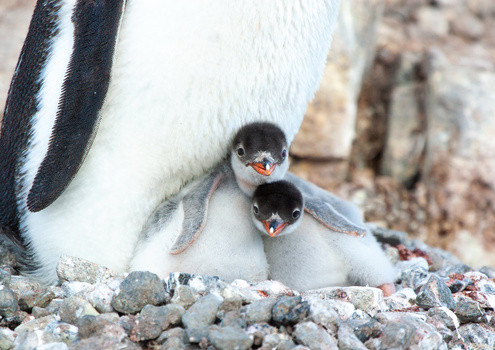 Sapa Vietnam Trekking
Sapa Vietnam Trekking
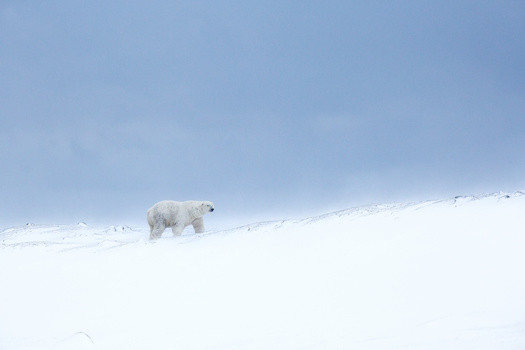 Kayaking Ha Long Bay Vietnam
Kayaking Ha Long Bay Vietnam
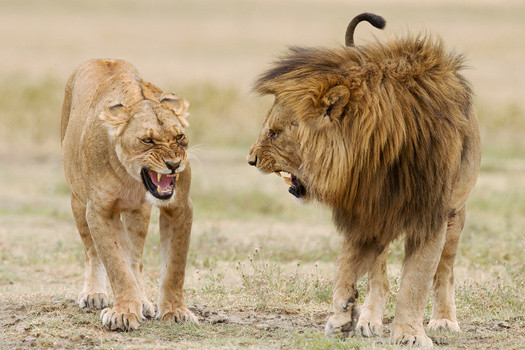 Ngorongoro Crater Tanzania Wildlife
Ngorongoro Crater Tanzania Wildlife
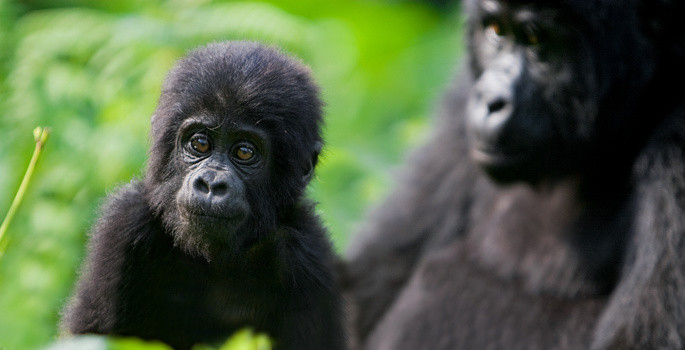 Bwindi Impenetrable Forest Uganda
Bwindi Impenetrable Forest Uganda
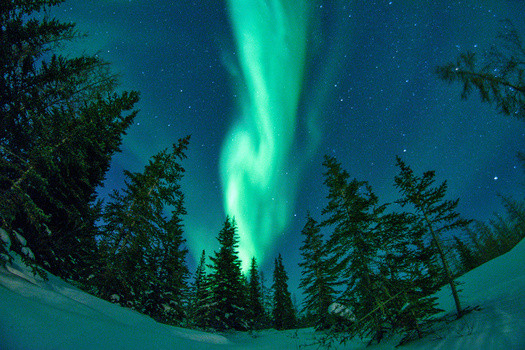 Aurora Borealis Display Frontiers North
Aurora Borealis Display Frontiers North
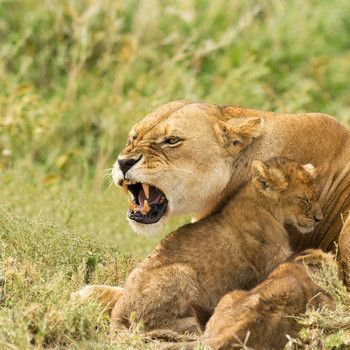 Lion Mother and Cubs Ndutu Tanzania
Lion Mother and Cubs Ndutu Tanzania
 Marius Coetzee Wildlife Photography
Marius Coetzee Wildlife Photography
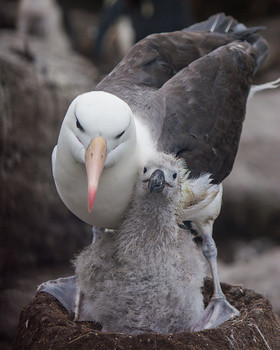 Albatross Mother Falkland Islands
Albatross Mother Falkland Islands
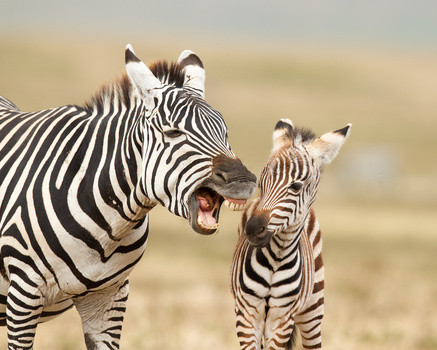 Zebra Foal Ngorongoro Crater Tanzania
Zebra Foal Ngorongoro Crater Tanzania
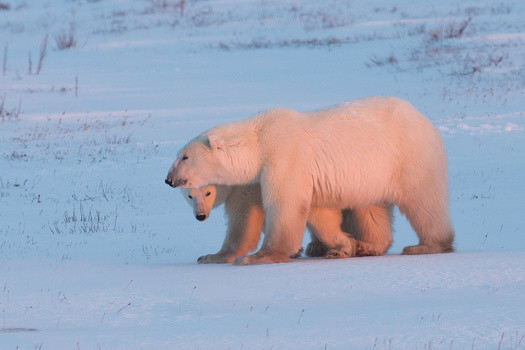 Peek-a-boo Bear Wapusk National Park
Peek-a-boo Bear Wapusk National Park
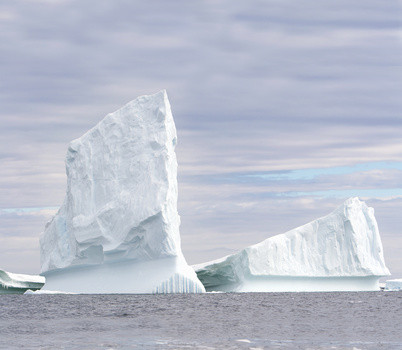 Iceberg Alley Antarctica Cruise
Iceberg Alley Antarctica Cruise
 Zebra Portrait Ngorongoro Crater Tanzania
Zebra Portrait Ngorongoro Crater Tanzania



